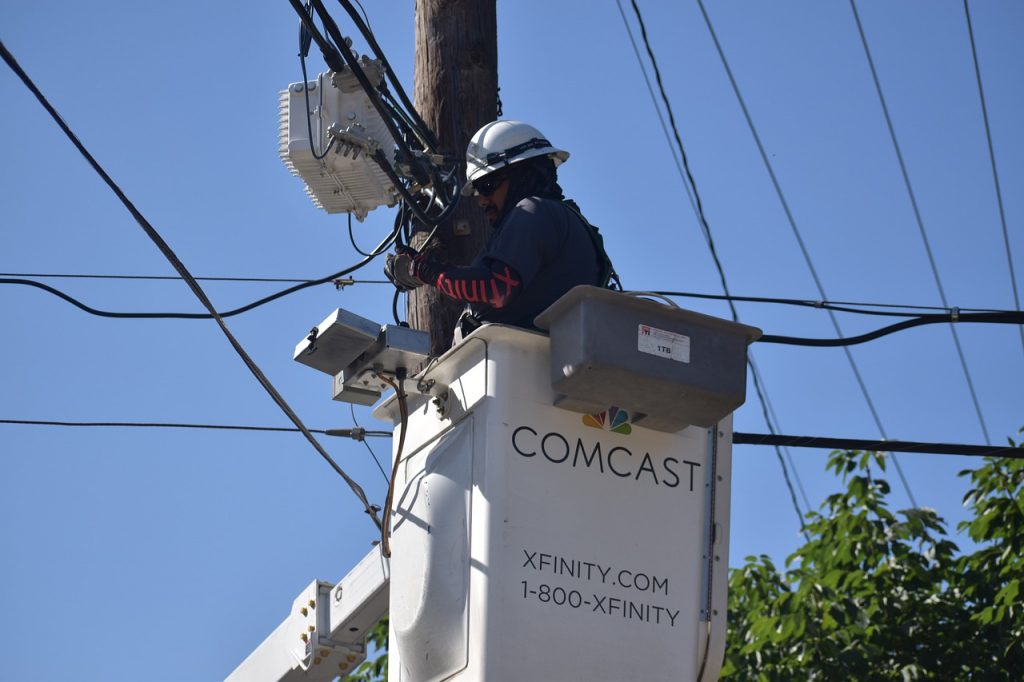Comcast Caught Overtly Lying About Its Internet Service
Comcast was not honest with the FCC when it had to provide a map of its coverage areas.
This article is more than 2 years old

The federal government is almost ready to expand broadband services throughout the United States. So many companies (including Comcast) are racing to claim coverage areas. And in the process, it appears at least one service giant is lying about its reach, which likely isn’t surprising news to most people.
The National Telecommunications and Information Administration (NTIA) has $42.45 billion in grant money earmarked to improve broadband coverage. But the NTIA needs a way to decide who should receive that funding. So, it plans to use a coverage map that the FCC is currently developing.
The FCC asked internet service providers (ISP) to provide maps of their coverage areas, which it will then compile. Individuals can search for their addresses on the FCC website to see if they are in the coverage areas. If there is an issue, each individual can officially challenge the accuracy of the map.
And that is what Matthew Hillier did when he found his address incorrectly listed on the broadband map. It turns out that Comcast claimed it serviced his home, even though they don’t. After he challenged the data, Comcast immediately disputed his claim.
The FCC responded by asking Hillier to try and work things out with Comcast before the agency was willing to take action. Hillier was understandably unhappy with that news. He replied, “I submitted proof from Comcast/Xfinity’s own systems that my address was not served by this provider despite being reported as such to you by Comcast/Xfinity… I expect more from a government body like the FCC [than] to just say ‘go sort it out and let us know how it turns out.'”
Hillier also contacted Ars Technica about the situation. The publication immediately looked into Comcast’s claims. And what they found was surprising.
“Upon reviewing Hillier’s address, we verified that it’s impossible to order service at the home on Comcast’s website. Just as Hillier told the FCC, Comcast’s online availability checker says it’s an ‘invalid address’—even though Comcast not only told the FCC it serves the home but also disputed Hillier’s challenge when he pointed out the error.” So Ars Technica reached out to Comcast about the false data.
The company quickly did an about-face, conceding that they submitted inaccurate data about Hillier’s home to the FCC. It now has 30 days to correct its original submission. But the story doesn’t end there.
Ars Technica also looked into the rest of Hillier’s subdivision and nearby streets. They discovered over 30 nearby residential addresses that Comcast claimed to service. But the company’s website lists each address as “invalid,” meaning homeowners cannot get Comcast service.
And it gets worse. The publication found 10 more addresses in a neighboring town and 13 addresses in Fort Collins that Comcast claimed to service. “But after you select the address and click ‘Check availability,’ you’re met with Comcast’s ‘invalid address’ message.”
It does not appear that the FCC plans to take any actions against Comcast for reporting false coverage data. But the good news is that “Beyond the challenge process, the FCC also has the ability to initiate verifications of provider-reported availability and to conduct audits. In addition to reviewing the data submitted by providers and looking for anomalies, patterns that emerge in the challenge and crowdsource processes will be used to identify areas and providers to target in an effort to identify over-reporting.”









